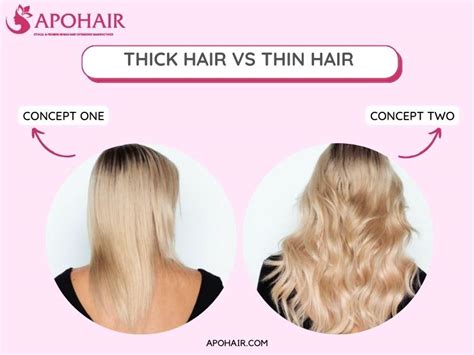The thickness of your scalp is a key factor that can affect your hair health and appearance. Knowing the difference between fine and thick scalps can help you determine the best hair care routine for your individual needs.

One of the most noticeable differences between fine and thick scalps is hair density. Fine scalps have fewer hair follicles per square inch, resulting in thinner, sparser hair. Thick scalps, on the other hand, have more follicles, leading to thicker, fuller hair.
The diameter of individual hair strands also varies between fine and thick scalps. Fine hair is thin and delicate, while thick hair is coarser and more robust. This difference in thickness can affect the overall weight and volume of your hair.
The scalp’s oil glands produce sebum, a natural oil that helps keep hair and skin moisturized. Fine scalps typically produce less sebum than thick scalps, leading to drier hair that can become frizzy or brittle.
Dandruff, also known as seborrheic dermatitis, is a common condition that can affect both fine and thick scalps. However, fine scalps are more susceptible to dandruff due to their decreased ability to produce natural oils. Flaking is another common issue for fine scalps, as the thinner hair allows dead skin cells to accumulate more easily.
Fine scalps are often more sensitive than thick scalps. This is because the thinner skin allows for increased exposure to external stimuli, such as chemicals, heat, and styling tools. Fine scalps may experience irritation, redness, and itching more easily than thick scalps.
Styling fine and thick hair can present different challenges. Fine hair can be difficult to style due to its lack of volume and thickness. Thick hair, on the other hand, is more resilient and can handle a wider range of hairstyles without losing its shape.
The rate of hair growth can vary between fine and thick scalps. Fine hair tends to grow more slowly than thick hair due to its thinner shaft. This can make it more challenging to achieve significant hair length with fine hair.
Interestingly, the thickness of your scalp can affect the appearance of your hair color. Fine hair reflects light more strongly than thick hair, giving it a brighter, more vibrant appearance. Thick hair, on the other hand, absorbs more light, resulting in a darker, more muted tone.
Both fine and thick scalps can experience hair loss, but the type of hair loss may differ. Fine scalps are more prone to overall hair thinning, while thick scalps may experience more localized hair loss, such as male or female pattern baldness.
The hair care needs of fine and thick scalps differ significantly. Fine hair typically requires more volume-boosting products and treatments, while thick hair may benefit from products that control oil production and tame frizz. Consulting a professional stylist can help you determine the best hair care regimen for your scalp type.
Understanding the differences between fine and thick scalps is essential for creating a customized hair care routine that meets your individual needs. By addressing the unique challenges and benefits of each scalp type, you can achieve healthier, more beautiful hair.
